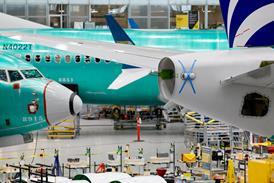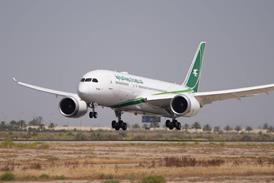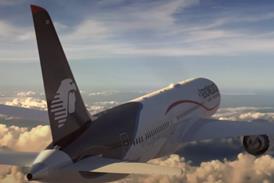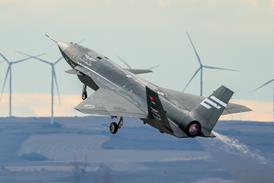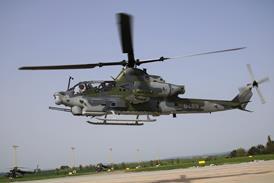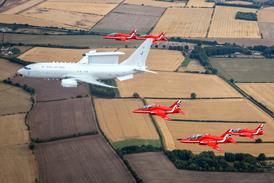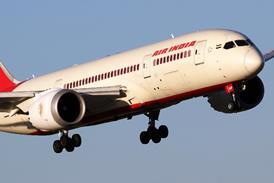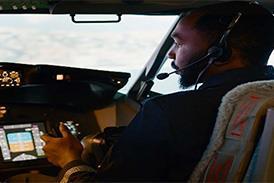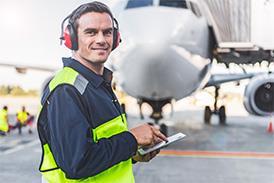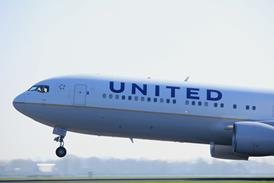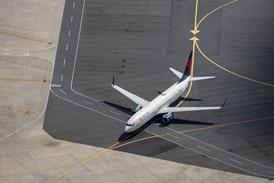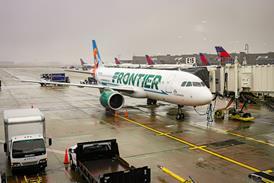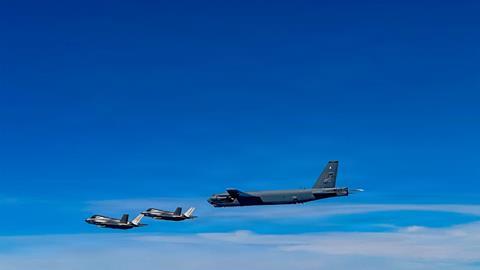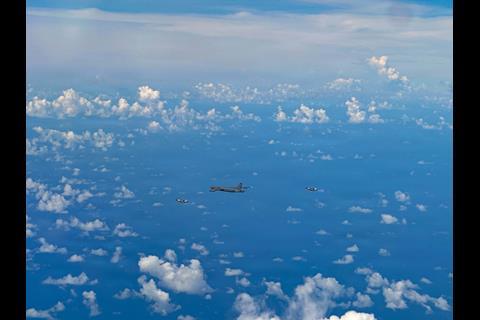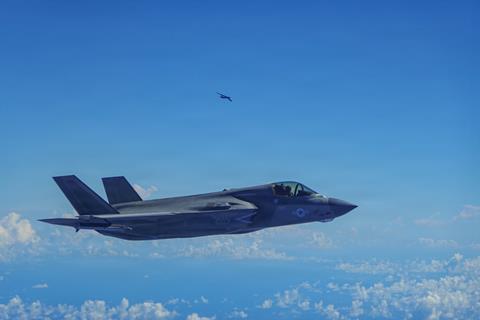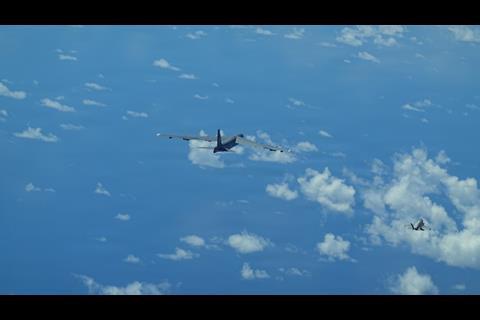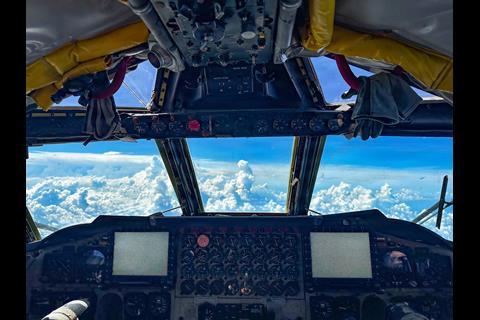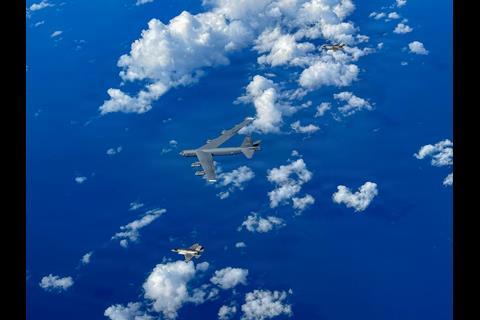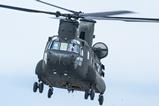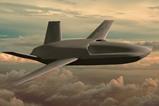As part the USA’s ongoing military build-up in Latin America, Washington is deploying some of its most powerful air assets to the region, including heavy bombers and stealth fighters.
The Pentagon on 15 October carried out what it is describing as a “bomber attack demonstration” involving two Lockheed Martin F-35B jets from the US Marine Corps and a single Boeing B-52H bomber from the US Air Force.
“The bomber attack demonstration showcased Southern Command’s ability to quickly mobilise and enable rapid establishment of credible, combat-ready forces with effective and overwhelming force,” the Pentagon said on 17 October.
Neither the US Air Force nor the Department of Defense (now styled as the Department of War by the Trump Administration) has previously used the phrase bomber attack demonstration.
The air force says only that the long-range bombers “conducted training operations, showcasing the US Air Force’s global reach and strategic strike capability against transnational threats”.
“Bomber attack demonstrations contributed to the collective defence of the Western Hemisphere and demonstrate the US commitment to the safety and security of the region,” the service adds.
The precise location of the sortie was not disclosed by the Pentagon, which identified the show of force flight only as taking place somewhere within the US Southern Command area of responsibility.
That region includes all of Latin America and the Caribbean.
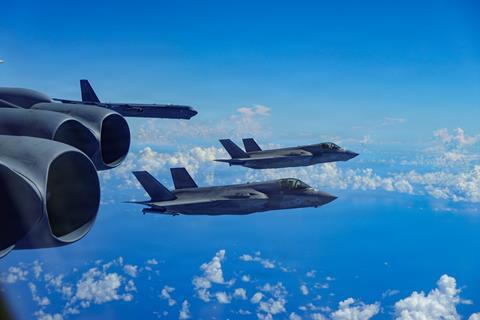
However, online flight tracking enthusiasts quickly noted the presence of multiple B-52s flying off the coast of Venezuela on 15 October, with flight tracks originating in Shreveport, Louisiana.
Shreveport is home to Barksdale AFB and the USAF’s 2nd and 307th Bomb Wings, both of which operate the B-52H.
Flight tracking data from 15 October, which did not indicate the presence of the F-35Bs, showed the bombers on course between the US Caribbean territory of Puerto Rico and the South American mainland, several hundred kilometres from the Venezuelan coast.
The F-35Bs participating in the bomber attack demonstration were from the Marine Fighter Attack Squadron 225 based in Yuma, Arizona. The squadron operates the short take-off and vertical landing jump jet variant of the F-35 in a ground attack role.
The fighters involved in the 15 October bomber attack demo are believed to have come from nearby Puerto Rico, where the Pentagon dispatched a contingent of F-35s in September.
Washington has spent the past two months building up military forces in Caribbean under the auspices of countering narcotics trafficking, blame for which the Trump Administration has assigned to the government of Venezuelan strongman Nicolas Madruo.
Trump himself has described that government as a cartel.
The US campaign has included repeatedly targeting small boats in the area with lethal air strikes from uncrewed platforms.
After one of those strikes, the two of Venezuela’s aged Lockheed Martin F-16A fighters conducted a low pass over a US Navy warship in the southern Caribbean – a move the Pentagon decried as proactive.
In September, USAF special operations troops practised seizing airfields in the US Virgin Islands territory, although the service says those drills were preplanned.
Several US Navy guided-missile destroyers have been positioned in the region, along with an “amphibious ready group” consisting of some 2,000 combat troops and a handful of Boeing AV-8B Harrier II fighters, stationed aboard the assault ship USS Iwo Jima.
See photos of the 15 October bomber attack demonstration flight:


